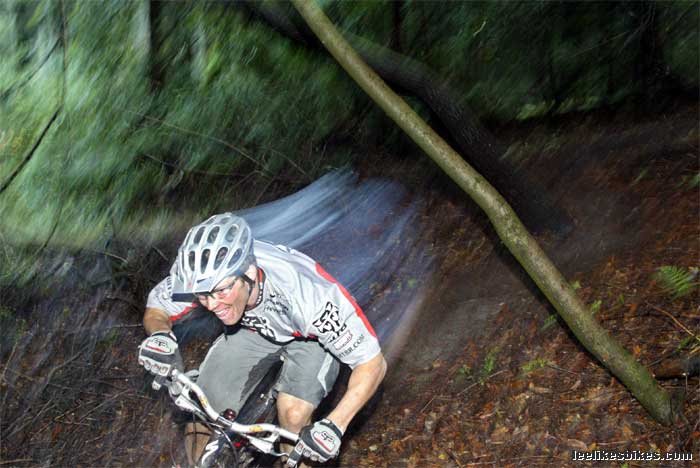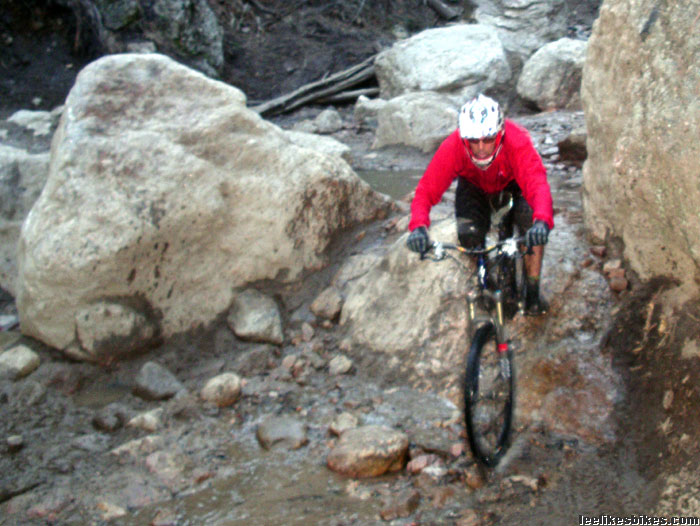How muddy is too muddy?

Hey Lee,
Nobody’s ever been able to give me an answer that seemed reasonable to this question, but you know this kind of thing, so maybe you can weigh in: When is it ok to ride a wet trail?
Back in high school, we used to rip it up in waist-deep mud just to see how dirty we could get. It never even occurred to us that the scars and ruts we left on the wet trails would be there for months. Now that I’m a little more “enlightened,” I’m never sure how long I should wait after rain before I hit the trails. How damaging is it to ride a wet trail? Do we need to wait until it’s dry enough that our tires won’t leave a rut? The NorCal rainy season is upon us and I can’t take it anymore — I want to get out and ride… but I don’t want to ruin my favorite spots.
What do you think!?
Thanks Lee.
-stads
 Curtis Keene rips ultra sweetness in Santa Cruz. The redwood forests are prime when wet. |
Hey Stads,
I spent 10 glorious years in NorCal, so I know your mud brother, I know your mud.
Do not ride if:
1) The mud sticks to your bike, and/or
2) You leave tracks.
If mud sticks to your bike, you are leaving ruts behind. If you leave ruts behind, that tells everyone a renegade mountain biker came through, plus it speeds erosion.
Whether these bad things happen depends on the trail’s surface and layout. In general:
– Clay is bad news. Wet clay is very slick. Moist clay is very sticky. Not cool. East Bay.
– Loam, aka topsoil, is good news. It drains very well and encourages the growth of forest pixies. Santa Cruz.
– Rock and gravel tend to be good. Upper Montara Mountain.
– Steep trails tend to drain the best, if they’re built correctly. El Corte de Madera.
– Flat trails tend to accumulate silt and get mucky. The rolling hills in the East Bay.
– Frozen trails are very ridable. Until they thaw.
 This river bed in Left Hand Canyon OHV Area sure is wet, but I’m not doing any damage. |
And while we’re on the subject:
– Good Bay Area spots for rainy weather: almost anywhere in the coastal mountains; Rockville; Upper Montara Mountain; Stevens Canyon; Mitchell Canyon on Mount Diablo; parts of Henry Coe State Park. If you’re not leaving tracks, you’re good.
– Do not ride around puddles. This widens the trail and degrades habitat that will someday support a condominium development. Ride through the puddle. Keep the trail the width it is.
– Do not transport dirt/mud from place to place. As you might know, the East Bay is rife with star thistle. Clean your bike before you ride elsewhere. If you bring star thistle to Boulder, CO I will have to kill you.
Please, for this snowbound and injured Coloradan, go rip some Santa Cruz love.
— Lee

Comments are closed.